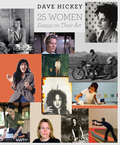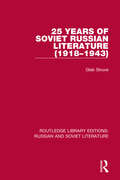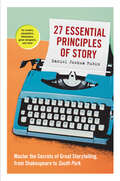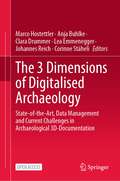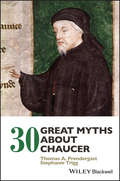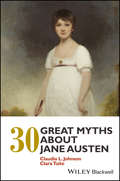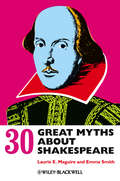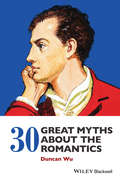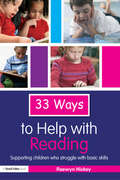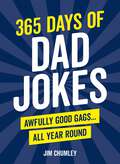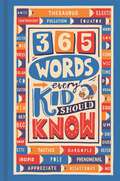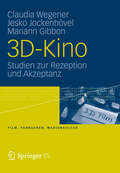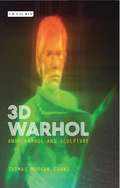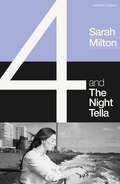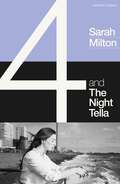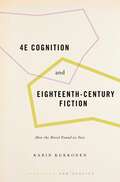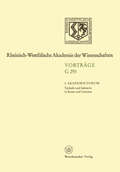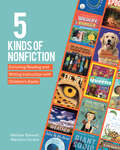- Table View
- List View
25 Women: Essays on Their Art
by Dave HickeyNewsweek calls him “exhilarating and deeply engaging.” Time Out New York calls him “smart, provocative, and a great writer.” Critic Peter Schjeldahl, meanwhile, simply calls him “My hero.” There’s no one in the art world quite like Dave Hickey—and a new book of his writing is an event. 25 Women will not disappoint. The book collects Hickey’s best and most important writing about female artists from the past twenty years. But this is far more than a compilation: Hickey has revised each essay, bringing them up to date and drawing out common themes. Written in Hickey’s trademark style—accessible, witty, and powerfully illuminating—25 Women analyzes the work of Joan Mitchell, Bridget Riley, Fiona Rae, Lynda Benglis, Karen Carson, and many others. Hickey discusses their work as work, bringing politics and gender into the discussion only where it seems warranted by the art itself. The resulting book is not only a deep engagement with some of the most influential and innovative contemporary artists, but also a reflection on the life and role of the critic: the decisions, judgments, politics, and ethics that critics negotiate throughout their careers in the art world. Always engaging, often controversial, and never dull, Dave Hickey is a writer who gets people excited—and talking—about art. 25 Women will thrill his many fans, and make him plenty of new ones.
25 Women: Essays on Their Art
by Dave HickeyNewsweek calls him “exhilarating and deeply engaging.” Time Out New York calls him “smart, provocative, and a great writer.” Critic Peter Schjeldahl, meanwhile, simply calls him “My hero.” There’s no one in the art world quite like Dave Hickey—and a new book of his writing is an event. 25 Women will not disappoint. The book collects Hickey’s best and most important writing about female artists from the past twenty years. But this is far more than a compilation: Hickey has revised each essay, bringing them up to date and drawing out common themes. Written in Hickey’s trademark style—accessible, witty, and powerfully illuminating—25 Women analyzes the work of Joan Mitchell, Bridget Riley, Fiona Rae, Lynda Benglis, Karen Carson, and many others. Hickey discusses their work as work, bringing politics and gender into the discussion only where it seems warranted by the art itself. The resulting book is not only a deep engagement with some of the most influential and innovative contemporary artists, but also a reflection on the life and role of the critic: the decisions, judgments, politics, and ethics that critics negotiate throughout their careers in the art world. Always engaging, often controversial, and never dull, Dave Hickey is a writer who gets people excited—and talking—about art. 25 Women will thrill his many fans, and make him plenty of new ones.
25 Women: Essays on Their Art
by Dave HickeyNewsweek calls him “exhilarating and deeply engaging.” Time Out New York calls him “smart, provocative, and a great writer.” Critic Peter Schjeldahl, meanwhile, simply calls him “My hero.” There’s no one in the art world quite like Dave Hickey—and a new book of his writing is an event. 25 Women will not disappoint. The book collects Hickey’s best and most important writing about female artists from the past twenty years. But this is far more than a compilation: Hickey has revised each essay, bringing them up to date and drawing out common themes. Written in Hickey’s trademark style—accessible, witty, and powerfully illuminating—25 Women analyzes the work of Joan Mitchell, Bridget Riley, Fiona Rae, Lynda Benglis, Karen Carson, and many others. Hickey discusses their work as work, bringing politics and gender into the discussion only where it seems warranted by the art itself. The resulting book is not only a deep engagement with some of the most influential and innovative contemporary artists, but also a reflection on the life and role of the critic: the decisions, judgments, politics, and ethics that critics negotiate throughout their careers in the art world. Always engaging, often controversial, and never dull, Dave Hickey is a writer who gets people excited—and talking—about art. 25 Women will thrill his many fans, and make him plenty of new ones.
25 Years of Soviet Russian Literature (Routledge Library Editions: Russian and Soviet Literature #1)
by Gleb StruveThis book, first published in 1944, is a comprehensive survey of post-revolutionary Russian literature up to the early 1940s. A huge range of writers are examined, and the analysis is made in the knowledge of the sometimes considerable pressure brought by the Government on writers in Soviet Russia. Links are made by the author between the writers being assessed, as well as to the Russian writers that had come before them. As a wide-ranging analysis of Soviet literature, this book has rarely been bettered.
25 Years of Soviet Russian Literature (Routledge Library Editions: Russian and Soviet Literature #1)
by Gleb StruveThis book, first published in 1944, is a comprehensive survey of post-revolutionary Russian literature up to the early 1940s. A huge range of writers are examined, and the analysis is made in the knowledge of the sometimes considerable pressure brought by the Government on writers in Soviet Russia. Links are made by the author between the writers being assessed, as well as to the Russian writers that had come before them. As a wide-ranging analysis of Soviet literature, this book has rarely been bettered.
27 Essential Principles of Story: Master the Secrets of Great Storytelling, from Shakespeare to South Park
by Daniel Joshua RubinA modern and actionable guide to the fundamentals of writing compelling, well-crafted, authentic stories in any medium, with lessons illustrated by novels, plays, films, music, video games, and TV, and writers from Shakespeare and Dostoevsky to Quentin Tarantino and Eminem.
The 3 Dimensions of Digitalised Archaeology: State-of-the-Art, Data Management and Current Challenges in Archaeological 3D-Documentation
by Marco Hostettler Anja Buhlke Clara Drummer Lea Emmenegger Johannes Reich Corinne StäheliThis open access book aims to provide an overview of state-of-the-art approaches to 3D documentation from a practical perspective and formulate the most important areas for future developments. Bringing together a wide range of case studies, examples of best practice approaches, workflows, and first attempts to establish sustainable solutions to pressing problems, this book offers readers current practical advice on how to approach 3D archaeology and cultural heritage.Divided into five parts, this book begins with an overview of 3D archaeology in its present state. It goes on to give insights into the development of the technology and recent cutting-edge applications. The next section identifies current challenges in 3D archaeology and then presents approaches and solutions for data management of a large number of 3D objects and ways to ensure sustainable solutions for the archiving of the produced data. This book will be of interest to researchers working in the fields of archaeology, heritage management, and digital humanities in general.
30 Great Myths about Chaucer
by Thomas A. Prendergast Stephanie TriggThe facts and fictions that continue to shape our understanding of Chaucer and his place in literary tradition Is Chaucer the father of English literature? The first English poet? Was he a feminist? A political opportunist? A spy? Is Chaucer’s language too difficult for modern readers? 30 Great Myths about Chaucer explores the widely held ideas and opinions about the medieval poet, discussing how ‘myths’ have influenced Chaucer’s reception history and interpretations of his poetry through the centuries. This unique text offers original insights on the character of Chaucer, the nature of his works, the myths that inform our conceptions of Chaucer, and the underlying causes of these myths. Each accessible and engaging chapter focuses on a specific myth, including those surrounding Chaucer’s romantic life, political leanings, religious views, personal struggles, financial challenges, ideas about chivalry, representations of social class, and many others. More than simply correcting inaccurate facts or clarifying common misconceptions about Chaucer, the text delves deeper to address how the myths have shaped the critical interpretation and enduring literary legacy of Chaucer. This innovative volume: Explores how generations of readers continue to shape understanding of Chaucer Highlights the intersection of medievalism and Chaucer studies Helps readers detach myths about Chaucer from critical readings of his works Examines whether myths about Chaucer are based on historical fact or literary interpretation Discusses the history of reading Chaucer in contexts of biography, criticism, and popular culture 30 Great Myths about Chaucer is an indispensable resource for academics, researchers, graduate students, upper-level undergraduates, and general readers with interest in Chaucer and early English and Middle Ages literature.
30 Great Myths about Chaucer
by Thomas A. Prendergast Stephanie TriggThe facts and fictions that continue to shape our understanding of Chaucer and his place in literary tradition Is Chaucer the father of English literature? The first English poet? Was he a feminist? A political opportunist? A spy? Is Chaucer’s language too difficult for modern readers? 30 Great Myths about Chaucer explores the widely held ideas and opinions about the medieval poet, discussing how ‘myths’ have influenced Chaucer’s reception history and interpretations of his poetry through the centuries. This unique text offers original insights on the character of Chaucer, the nature of his works, the myths that inform our conceptions of Chaucer, and the underlying causes of these myths. Each accessible and engaging chapter focuses on a specific myth, including those surrounding Chaucer’s romantic life, political leanings, religious views, personal struggles, financial challenges, ideas about chivalry, representations of social class, and many others. More than simply correcting inaccurate facts or clarifying common misconceptions about Chaucer, the text delves deeper to address how the myths have shaped the critical interpretation and enduring literary legacy of Chaucer. This innovative volume: Explores how generations of readers continue to shape understanding of Chaucer Highlights the intersection of medievalism and Chaucer studies Helps readers detach myths about Chaucer from critical readings of his works Examines whether myths about Chaucer are based on historical fact or literary interpretation Discusses the history of reading Chaucer in contexts of biography, criticism, and popular culture 30 Great Myths about Chaucer is an indispensable resource for academics, researchers, graduate students, upper-level undergraduates, and general readers with interest in Chaucer and early English and Middle Ages literature.
30 Great Myths about Jane Austen
by Claudia L. Johnson Clara TuiteA fascinating look into the myths that continue to shape our understanding and appreciation of Jane Austen. Was Jane Austen the best-selling novelist of her time? Are all her novels romances? Did they depict the traditional world of the aristocracy? Is Austen’s writing easy to understand? Well into the 21st century, Jane Austen continues to be one of the most compelling novelists in all English literature. Many of her ideas about class, family, history, intimacy, manners, love, desire, and society, have inspired “myths” that are often contradictory — she was a Tory who was also a liberal feminist, or, her novels are at once sharply satirical and unapologetically romantic. Myths, like Austen’s works, are dynamic, changing over time and impacting how we read and interpret literature. 30 Great Myths about Jane Austen examines the accepted beliefs — both true and untrue —that have most influenced our readings of Austen. Rather than simply de-bunking, or validating, commonly-held views about Austen, authors Claudia L. Johnson and Clara Tuite explore how these myths can be used to engage with the life, work, and reception of Jane Austen. Applying the most up-to-date scholarship to better understand how myths shape our appreciation of Jane Austen, this fascinating volume: Introduces readers to the history of Austen reception, both in academic scholarship and in the general public Examines Jane Austen’s life and letters, her historical contexts, her texts, and their afterlives Discusses Austen’s influence on the development of literary criticism as a discipline Explores each of Austen’s main novels, as well as relatively obscure texts such as Sanditon and The Watsons Offering engaging narrative and original insights, 30 Great Myths about Jane Austen is a must-read for scholars, instructors, and students of English and Romantic literature, as well as general readers with interest in the life and works of Jane Austen.
30 Great Myths about Jane Austen
by Claudia L. Johnson Clara TuiteA fascinating look into the myths that continue to shape our understanding and appreciation of Jane Austen. Was Jane Austen the best-selling novelist of her time? Are all her novels romances? Did they depict the traditional world of the aristocracy? Is Austen’s writing easy to understand? Well into the 21st century, Jane Austen continues to be one of the most compelling novelists in all English literature. Many of her ideas about class, family, history, intimacy, manners, love, desire, and society, have inspired “myths” that are often contradictory — she was a Tory who was also a liberal feminist, or, her novels are at once sharply satirical and unapologetically romantic. Myths, like Austen’s works, are dynamic, changing over time and impacting how we read and interpret literature. 30 Great Myths about Jane Austen examines the accepted beliefs — both true and untrue —that have most influenced our readings of Austen. Rather than simply de-bunking, or validating, commonly-held views about Austen, authors Claudia L. Johnson and Clara Tuite explore how these myths can be used to engage with the life, work, and reception of Jane Austen. Applying the most up-to-date scholarship to better understand how myths shape our appreciation of Jane Austen, this fascinating volume: Introduces readers to the history of Austen reception, both in academic scholarship and in the general public Examines Jane Austen’s life and letters, her historical contexts, her texts, and their afterlives Discusses Austen’s influence on the development of literary criticism as a discipline Explores each of Austen’s main novels, as well as relatively obscure texts such as Sanditon and The Watsons Offering engaging narrative and original insights, 30 Great Myths about Jane Austen is a must-read for scholars, instructors, and students of English and Romantic literature, as well as general readers with interest in the life and works of Jane Austen.
30 Great Myths about Shakespeare
by Laurie Maguire Emma SmithThink you know Shakespeare? Think again . . . Was a real skull used in the first performance of Hamlet? Were Shakespeare's plays Elizabethan blockbusters? How much do we really know about the playwright's life? And what of his notorious relationship with his wife? Exploring and exploding 30 popular myths about the great playwright, this illuminating new book evaluates all the evidence to show how historical material—or its absence—can be interpreted and misinterpreted, and what this reveals about our own personal investment in the stories we tell.
30 Great Myths about the Romantics
by Duncan WuBrimming with the fascinating eccentricities of a complex and confusing movement whose influences continue to resonate deeply, 30 Great Myths About the Romantics adds great clarity to what we know – or think we know – about one of the most important periods in literary history. Explores the various misconceptions commonly associated with Romanticism, offering provocative insights that correct and clarify several of the commonly-held myths about the key figures of this era Corrects some of the biases and beliefs about the Romantics that have crept into the 21st-century zeitgeist – for example that they were a bunch of drug-addled atheists who believed in free love; that Blake was a madman; and that Wordsworth slept with his sister Celebrates several of the mythic objects, characters, and ideas that have passed down from the Romantics into contemporary culture – from Blake’s Jerusalem and Keats’s Ode on a Grecian Urn to the literary genre of the vampire Engagingly written to provide readers with a fun yet scholarly introduction to Romanticism and key writers of the period, applying the most up-to-date scholarship to the series of myths that continue to shape our appreciation of their work
30 Great Myths about the Romantics
by Duncan WuBrimming with the fascinating eccentricities of a complex and confusing movement whose influences continue to resonate deeply, 30 Great Myths About the Romantics adds great clarity to what we know – or think we know – about one of the most important periods in literary history. Explores the various misconceptions commonly associated with Romanticism, offering provocative insights that correct and clarify several of the commonly-held myths about the key figures of this era Corrects some of the biases and beliefs about the Romantics that have crept into the 21st-century zeitgeist – for example that they were a bunch of drug-addled atheists who believed in free love; that Blake was a madman; and that Wordsworth slept with his sister Celebrates several of the mythic objects, characters, and ideas that have passed down from the Romantics into contemporary culture – from Blake’s Jerusalem and Keats’s Ode on a Grecian Urn to the literary genre of the vampire Engagingly written to provide readers with a fun yet scholarly introduction to Romanticism and key writers of the period, applying the most up-to-date scholarship to the series of myths that continue to shape our appreciation of their work
33 Ways to Help with Reading: Supporting Children who Struggle with Basic Skills (Thirty Three Ways to Help with....)
by Raewyn HickeyThirty Three Ways to Help with Reading equips teachers and teaching assistants with a wide range of practical resources to help children who are having difficulties learning the basic skills of reading. By providing a range of activities and games which engage children and encourage motivation in the classroom, the book provides ready-to-use material that doesn’t need lengthy forward preparation. These practical and fun ideas incorporate a range of learning styles, using kinaesthetic and auditory techniques, which put the emphasis on ‘games’ rather than ‘work’. The activities are therefore ideal for use with children who do not benefit from a traditional approach to reading. The book works step-by-step through activities which cover the key stages in the process of learning to read: Learning letters Recalling frequently used words Hearing sounds in words Blending sounds Reading for meaning The ‘how to help’ approach of the book is ideal for teachers and teaching assistants wanting to give quality learning experiences for those children experiencing difficulties with reading. With all the resources needed for the games included, the book provides quick and easy to use ideas, which can be implemented instantly in the classroom. The Routledge ’33 ways…’ series of practical ‘how-to’ books is for teachers, teaching assistants and SENCOs who are in need of fresh ideas to teach pupils in their care who are struggling with basic skills. It provides them with the tools to make good provision for a range of children in their class, and are planned to be a resource from which they can extract ideas and materials without having to plough through chapters of theory and research. Raewyn Hickey is an experienced classroom teacher who has worked in both the Literacy Initiative for Teachers project in Westminster and as a consultant for the Primary Strategy.
33 Ways to Help with Reading: Supporting Children who Struggle with Basic Skills (Thirty Three Ways to Help with....)
by Raewyn HickeyThirty Three Ways to Help with Reading equips teachers and teaching assistants with a wide range of practical resources to help children who are having difficulties learning the basic skills of reading. By providing a range of activities and games which engage children and encourage motivation in the classroom, the book provides ready-to-use material that doesn’t need lengthy forward preparation. These practical and fun ideas incorporate a range of learning styles, using kinaesthetic and auditory techniques, which put the emphasis on ‘games’ rather than ‘work’. The activities are therefore ideal for use with children who do not benefit from a traditional approach to reading. The book works step-by-step through activities which cover the key stages in the process of learning to read: Learning letters Recalling frequently used words Hearing sounds in words Blending sounds Reading for meaning The ‘how to help’ approach of the book is ideal for teachers and teaching assistants wanting to give quality learning experiences for those children experiencing difficulties with reading. With all the resources needed for the games included, the book provides quick and easy to use ideas, which can be implemented instantly in the classroom. The Routledge ’33 ways…’ series of practical ‘how-to’ books is for teachers, teaching assistants and SENCOs who are in need of fresh ideas to teach pupils in their care who are struggling with basic skills. It provides them with the tools to make good provision for a range of children in their class, and are planned to be a resource from which they can extract ideas and materials without having to plough through chapters of theory and research. Raewyn Hickey is an experienced classroom teacher who has worked in both the Literacy Initiative for Teachers project in Westminster and as a consultant for the Primary Strategy.
365 Days of Dad Jokes: Awfully Good Gags... All Year Round
by Jim ChumleyPerfect for dads and lovers of cheesy puns and one-liners, this pocket-sized collection offers a year's worth of mirth suitable for all agesThere's something very special about dad jokes - they're always enjoyably terrible, sometimes quite witty and occasionally downright hilarious. So if you're a dad looking to add to your collection of funnies, or you'd like to beat your old man at his own game, this is the book for you.Packed into these pages are pithy wisecracks, comically cringeworthy puns, silly one-liners and enough other types of joke to last an entire year. Among the hundreds of groan-worthy gags you'll find gems like: How many tickles does it take to make an octopus laugh? Ten tickles. Why are balloons so expensive? Inflation. What do you call an elephant who doesn't matter? Irrelephant. How does the moon cut his hair? Eclipse it. Did you hear about the circus fire? It was in tents. Unapologetically themselves, just like dads, these are jokes to inflict with glee on all the family.
365 Words Every Kid Should Know
by Lauren Holowaty Martina MotzoFrom the tough to spell to the downright funny, these are the 365 words all kids should know!Some words have strange double meanings. Others seem impossible to pronounce. Then there are the words that sound the same but mean something completely different when you change their spellings. And the ones with unusual stories behind them. Some are words you’ll need at school, while others you can use at home or with your friends. This book is packed with new words, old words, silly words, sporty words, political words, slang words, musical words, foodie words and loads, loads more.As well as simple definitions of each word, there are pronunciation tips, fun facts and handy mnemonics to help with spelling. 365 Words Every Kid Should Know has been developed with the aid of an educational consultant, to fit in with the curriculum’s Key Stages 2 and 3.
3D-Kino: Studien zur Rezeption und Akzeptanz (Film, Fernsehen, Medienkultur)
by Claudia Wegener Jesko Jockenhövel Mariann GibbonDreidimensionales Kino ist im Trend: Internationale Filmfestivals eröffenen mit 3D-Filmen, große Filmproduktionen werden immer häufiger auch oder ausschließlich dreidimensional umgesetzt, Gerätehersteller versuchen, den 3D-Markt im Bereich des Home-Entertainments zu erschließen. Das Buch nimmt die Perspektive des Publikums in den Blick und setzt sich mit dem Phänomen empirisch auseinander
3D Warhol: Andy Warhol and Sculpture (International Library of Modern and Contemporary Art)
by Thomas Morgan EvansRain machines; alarmed kosher pickle jars filled with gemstones; replica cornflakes boxes; 'disco décor'; time capsules; art bombs; birthday presents; perfume bottles and floating silver pillows that are clouds; paintings that are also films; museum interventions; collected and curated projects; expanded performance environments; holograms. This is a book about the vast array of sculptural work made by Andy Warhol between 1954 and 1987, a period that begins long before the first Pop paintings and ends in the year of his death.In 3D Warhol, Thomas Morgan Evans demonstrates that Warhol's engagement with sculpture and its traditional notions produced 'trespasses', bisecting across the expectations, allegiances and values within art historical, and ultimately, social, sites of investiture - or territories. This groundbreaking, original book brings to the forefront a major, but overlooked aspect of Warhol's oeuvre and provides an essential new perspective on the artist's legacy.
4 and The Night Tella (Modern Plays)
by Sarah MiltonYou definitely want to f*ck her but you don't want to know her. You certainly don't want to stay for breakfast… Sarah Milton's new one-woman play tells the story of one woman's immediate response to a sexual assault, fueled by a toxic friendship and crisis of identity.Two best friends are heading out for the night. Our protagonist, known as 'She', is hoping to win over her crush – Isaac the bartender, at their favourite joint. That night, her best friend Trixie decides to invite a group of men home that she fancies, promoting She as her sexy, obtainable friend, to help seal the deal. But when She wakes up the next day, confused, sore, laid next to a man she doesn't recognise, She is forced to re-evaluate everything she thinks she knows about her friendships, identity and sexuality.This edition was published to coincide with the premiere at London's Vault Festival 2022.
4 and The Night Tella (Modern Plays)
by Sarah MiltonYou definitely want to f*ck her but you don't want to know her. You certainly don't want to stay for breakfast… Sarah Milton's new one-woman play tells the story of one woman's immediate response to a sexual assault, fueled by a toxic friendship and crisis of identity.Two best friends are heading out for the night. Our protagonist, known as 'She', is hoping to win over her crush – Isaac the bartender, at their favourite joint. That night, her best friend Trixie decides to invite a group of men home that she fancies, promoting She as her sexy, obtainable friend, to help seal the deal. But when She wakes up the next day, confused, sore, laid next to a man she doesn't recognise, She is forced to re-evaluate everything she thinks she knows about her friendships, identity and sexuality.This edition was published to coincide with the premiere at London's Vault Festival 2022.
4E Cognition and Eighteenth-Century Fiction: How the Novel Found its Feet (Cognition and Poetics)
by Karin KukkonenWhen the novel broke into cultural prominence in the eighteenth century, it became notorious for the gripping, immersive style of its narratives. In this book, Karin Kukkonen explores this phenomenon through the embodied style in Eliza Haywood's flamboyant amatory fiction, Charlotte Lennox's work as a cultural broker between Britain and France, Sarah Fielding's experimental novels, and Frances Burney's practice of life-writing and fiction-writing. Four female authors who are often written out of the history of the genre are here foregrounded in a critical account that emphasizes the importance of engaging readers' minds and bodies, and which invites us to revisit our understanding of the rise of the modern novel. Kukkonen's innovative theoretical approach is based on the approach of 4E cognition, which views thinking as profoundly embodied and embedded in social and material contexts, extending into technologies and material devices (such as a pen), and enactive in the inherent links between perceiving the world and moving around in it. 4E Cognition and Eighteenth-Century Fiction investigates the eighteenth-century novel through each of these trajectories and shows how language explores its embodied dimension by increasing the descriptions of inner perception, or the bodily gestures around spoken dialogue. The embodied dimension is then related to the media ecologies of letter-writing, book learning, and theatricality. As the novel feeds off and into these social and material contexts, it comes into its own as a lifeworld technology that might not answer to standards of nineteenth-century realism but that feels 'real' because it is integrated into the lifeworld and embodied experiences. 4E cognition answers one of the central challenges to cognitive literary studies: how to integrate historical and cultural contexts into cognitive approaches.
5. Akademie-Forum Technik und Industrie in Kunst und Literatur: 312. Sitzung am 24. Juni 1987 in Düsseldorf (Rheinisch-Westfälische Akademie der Wissenschaften #G 293)
by Volker Neuhaus Klaus Wolfgang Niemöller Hans Schadewaldt5 Kinds of Nonfiction: Enriching Reading and Writing Instruction with Children's Books
by Melissa Stewart Marlene CorreiaOnce upon a time...children's nonfiction books were stodgy, concise, and not very kid friendly. Most were text heavy, with just a few scattered images decorating the content and meaning, rather than enhancing it. Over the last 20 years, children's nonfiction has evolved into a new breed of visually dynamic and engaging texts.In 5 Kinds of Nonfiction: Enriching Reading and Writing Instruction with Children's Books , Melissa Stewart and Dr. Marlene Correia present a new way to sort nonfiction into five major categories and show how doing so can help teachers and librarians build stronger readers and writers. Along the way, they: Introduce the 5 kinds of nonfiction: Active, Browseable, Traditional, Expository Literature, and Narrative -;and explore each category through discussions, classroom examples, and insights from leading children's book authorsOffer tips for building strong, diverse classroom texts and library collectionsProvide more than 20 activities to enhance literacy instructionInclude innovative strategies for sharing and celebrating nonfiction with students.With more than 150 exemplary nonfiction book recommendations and Stewart and Correia's extensive knowledge of literacy instruction, 5 Kinds of Nonfiction will elevate your understanding of nonfiction in ways that speak specifically to the info-kids in your classrooms, but will inspire all readers and writers.
